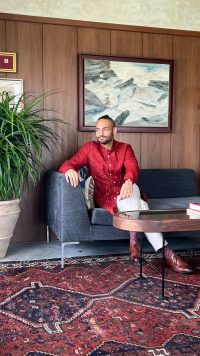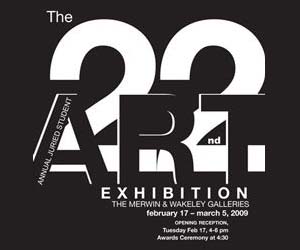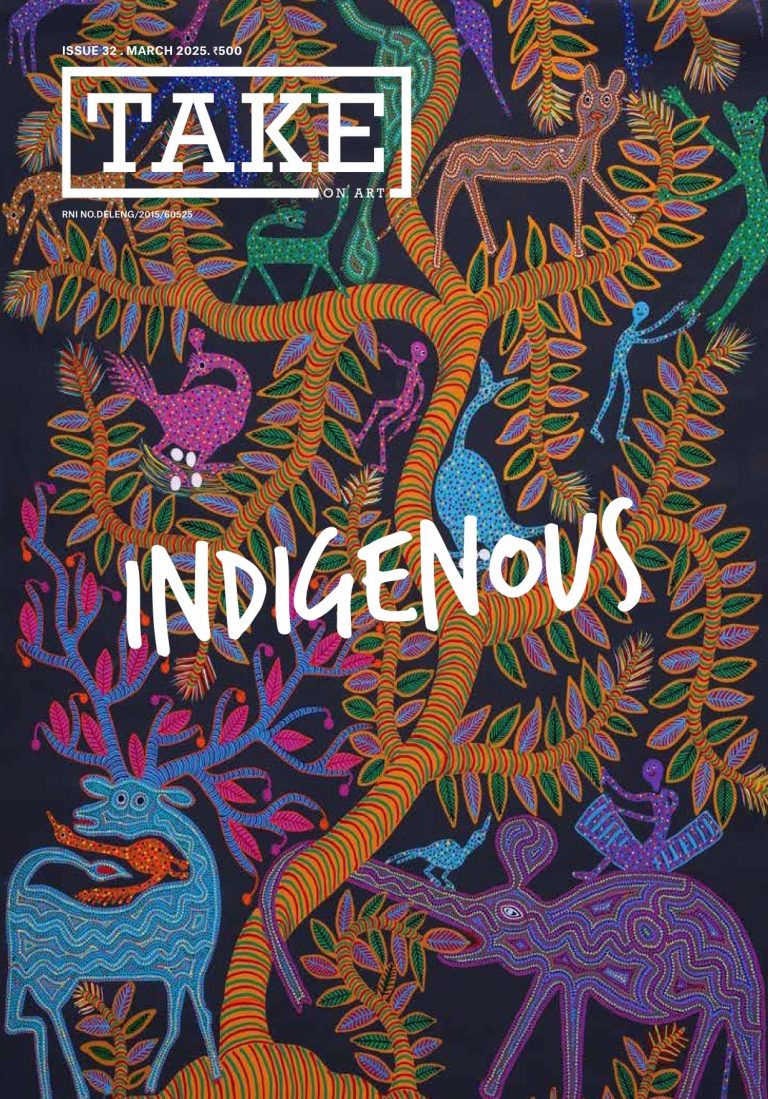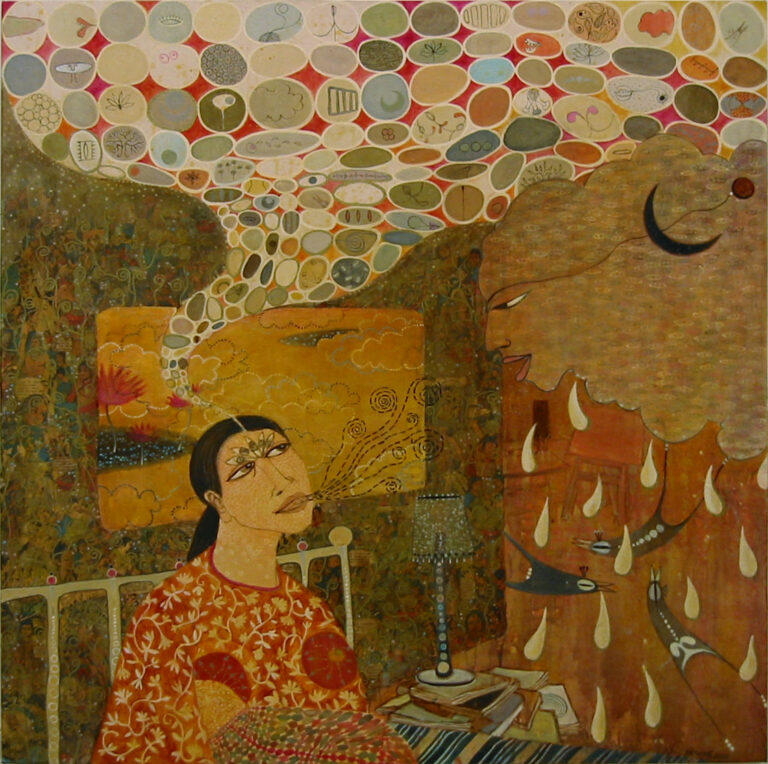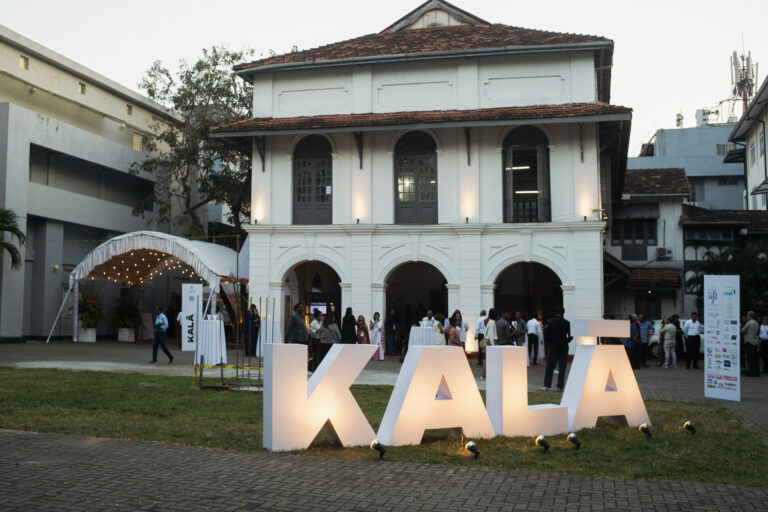 Robin Mondal, Untitled, 2016
Robin Mondal, Untitled, 2016
Avtar Foundation for the Arts, established by Jaiveer Johal, is dedicated to advancing modern and contemporary South Asian visual arts in Chennai. With a motto of ‘For Madras, From Madras’, the Foundation for the Arts, aims to bring great quality Modern and Contemporary art into the city in a curated capsule and to take the best that this city has to offer to the broader world. Named in honour of Jaiveer’s mother, Avtar Johal, the Foundation strives to bring exceptional art to the city, nurture local artistic talent, and lead connections between artists and art patrons. Its inaugural exhibition Untitled: Portraiture through the Avtar Collection, curated by Anish Gawande, opens at Alliance Francaise Madras (December 12-19, 2024), explores the eternal allure of the portraiture. In this interview with TAKE on Art, Johal walks us through the making of Avtar Foundation and what role can a patron play to overcome the challenges encountered by the arts and culture sector.

Rekha Rodwittiya, South African Pancha Tantra, 2010.
TAKE on Art: Could you walk us through the ideation and curation process of Avtar Foundation?
Jaiveer Johal: Madras as a city has a long heritage of creative arts – particularly music, dance theatre and cinema. When it comes to the visual arts, painting sculpture or even lens based arts: there is a significant gap in quality when compared to what is available in the rest of South Asia.
Over the last few decades while the other metropolitian cities of Delhi, Bangalore and Mumbai have managed to develop and nurture both public (all three have NGMA’s) and private (KNMA, MAP, amongst others) patronage of the visual arts. Apart from this even the commercial galleries in cities like Bombay have opened up to a much wider audience through Art Night Thursday etc!
While in Chennai for an enthusiast to have access to what our fellow lover of the arts has on their doorstep they would either have to leave the city or personally know a collector. Neither is a desirable. The idea of the foundation and all its curation is to bring the best of South Asian Art into Chennai, and to do so in a curated capsule rather than a survey show. This is to ensure that while we educate and build an audience we do not talk down to them. The first show around the idea of portraiture gives us an easy entry point into the realm of Contemporary Art – but it will also nudge the audience into understanding what more portraiture can be.

Bhupen Khakhar, Untitled. Year Unknown.
TAKE on Art: Could you discuss the role of public and private collaborations in advancing arts and culture ?
Jaiveer Johal: We live in a developing country, there are calls on the public exchequer: operating at a pressing magnitude on art or culture, particularly the visual arts which are traditionally perceived to be elitist. This implies that visual arts will exponentially require private patronage to thrive.
We have had a long history of patronage – from the royal princes and now merchant princes. This needs to be encouraged – the government can participate to make: import of artworks easier, and even make public spaces more accessible to private organisations who want to hold shows and events in such places. JNAF and CSMVS is a great example of how things can happen. Chennai Photo Biennale of which I am a patron is being allowed access to the Egmore Museum. If the ASI and the Ministry of Culture brings out a policy on how we can have better and more equitable access to these buildings and areas – it will help the entire art ecosystem.
Having said that, we always say more money the better – more funding for the arts. But the Lalit Kala Akademi does good work without much flow of the monetary value.
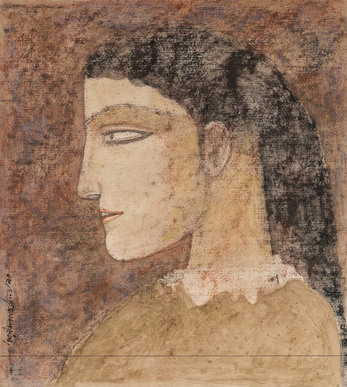
Ganesh Pyne, Untitled (Head), 1993.
TAKE on Art: How do you identify and select projects or initiatives to support, and what criteria do you consider when making these decisions?
Jaiveer Johal: The Avtar Foundation for the Arts has been founded with a clear mission ‘From Madras, For Madras’. So for us the first criteria is how do we make an impact in Chennai – so anything and everything we do, we centre the city and its people. For example in our soft launch phase we supported the Dakshna Chitra Museum to bring about an exhibition Tale of Three Cities (September 7- December 1, 2024) of K.G. Subramanyan’s unseen drawings from Cambridge, New York and China in celebration of this centennial year. This worked on both ends – K.G. Subramanyan was in a sense from Madras and the show definitely was for our local audience.
Similarly, the show on portraiture is to introduce the audience in Madras to the power of a well curated show. It goes beyond a survey and demonstrates us the evolving nature of the portrait and its socio-political context. We are dealing with an audience that is evolved in other sphere of art: dance, music, theatre, to name a few, but they may not be familiar with trends in contemporary art. Yet, we dare not be simplistic.
Another example is the foundations support for Hylozoic/Desires: Himali Singh Soin & David Soin Tappeser’s moving image work. The work will be having synchronous installations at Sharjah Biennale and Tate Britain and India Art Fair and Somerset House. We took a call to support this work once we were given enthusiastic assuarnces that the work will also be shown in Chennai as well.
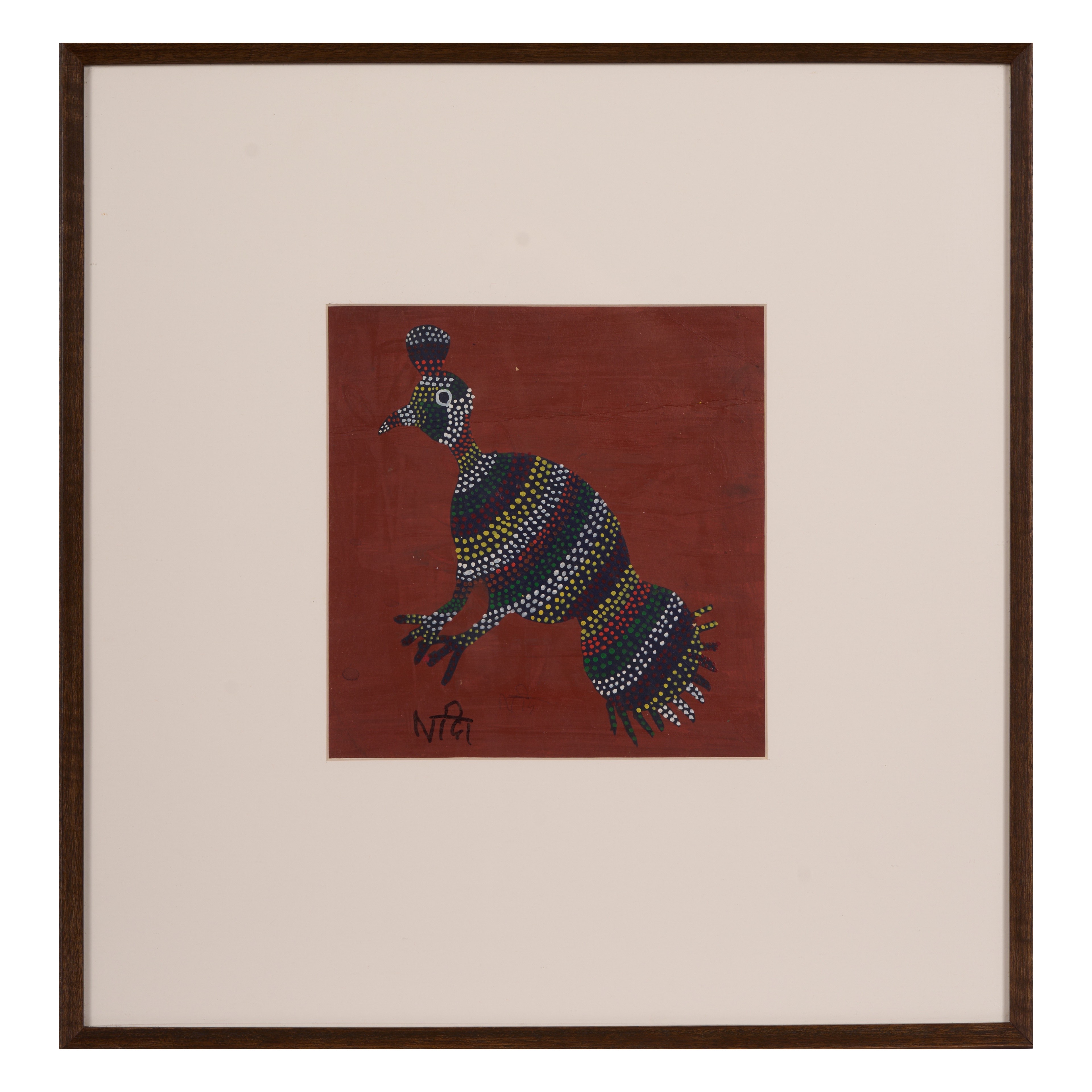
Lado Bai, Mor (Peacock), 1980s
TAKE on Art: In your opinion, what are some of the biggest challenges facing the arts and culture sector today, and how do you believe they can be addressed?
Jaiveer Johal: The challenges are many and varied, as we discussed there is a distinct lack of government spending and policy support. Funding is one end, the other is how do we make art accessible is another – how do we demystify art without over simplification. How do we generate good curatorial content that engages and audience and pushes them into reading more. I do not pretend I have all or even any of the answers, but I do know that the only way forward is to talk more openly about these challenges, fund good initiatives to help further the cause.
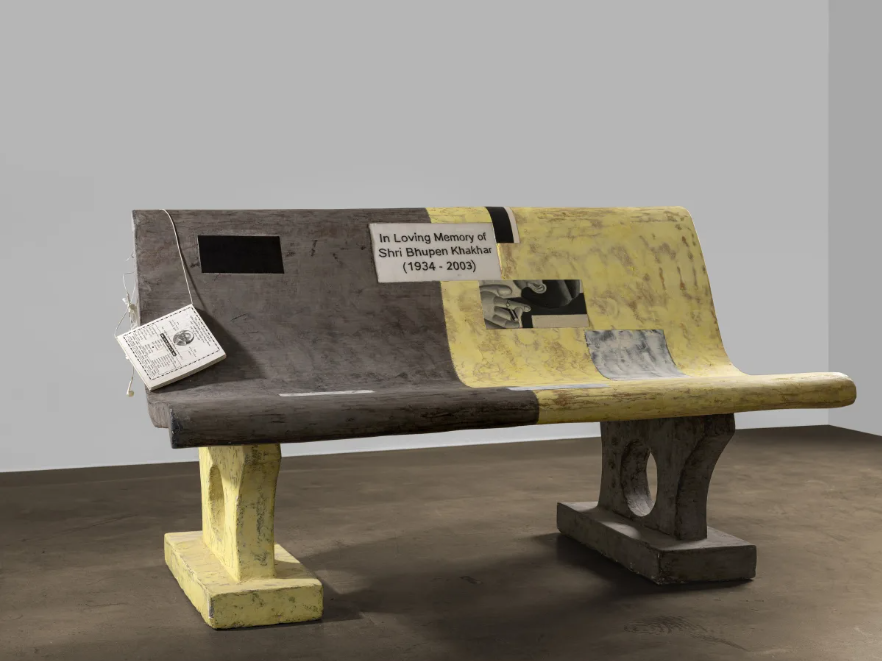
Atul Dodiya, The Bhupen Bench, 2023.
TAKE on Art: Mentorship is often invaluable in the arts. Have you had any mentor(s) who has influenced your journey, and how do you pay it forward to the next generation of artists and cultural leaders?
Jaiveer Johal: I could not agree with you more, the mentorship and more importantly the friendships I have formed in the art world – I hold more dear to me than the art itself. The list is long but I have to mention a few names – Geeta Mehra – the reason I collect art, she sold a nervous 30 year old self of mine, who had never bought a master before his first Raza – on installments that too, delivered the work much before it was paid. The amount of confidence that gave me as a young collector was phenomenal.
Dinesh Vazarni of Saffronart is more a friend, and his enthusiasm and the depth of research that his team does. It made me think: the only way to know more is to look at more artworks and read, read, and read. Then, of course, there is our dear friend Bhavna Kakar, who adds warmth to knowledge and the courage to mount cutting edge shows.
The list is long and gets perpetually extended – the more I meet my friends in the art world the more I am in awe of their commitment to the arts. There are way easier ways of making money than running a contemporary art gallery, it trully is a labour of love. My way of paying it forward is simple – the Foundation on one hand and making myself available to young collectors as possible on the other.
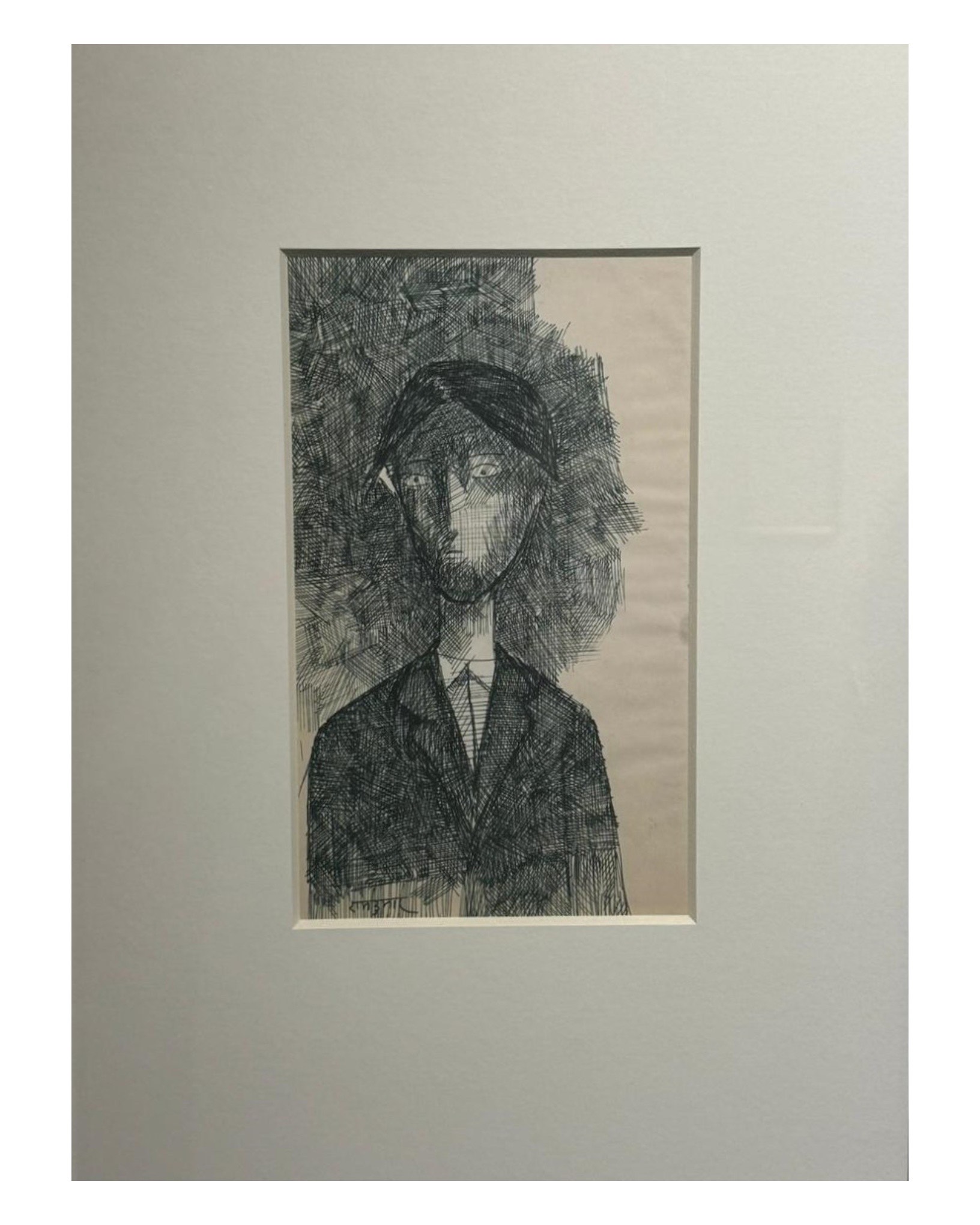
Ram Kumar, Untitled, 1967.
TAKE on Art: What should one look forward to when visiting Avtar Foundation?
Jaiveer Johal: I do not want to give away to much of the show but in the words of the curator of the show Anish Gawande, “The works alternately confront and evade the viewer: standing tall, exuding desire, peering inquisitively, or refusing to meet your gaze. They are, at their core, deeply personal yet strikingly universal, offering narratives that remain untold, waiting for the viewer to imbue them with meaning”. I want the viewer to come away with as many questions as answers – to make them think and hopefully get them to visit another show in the future.









